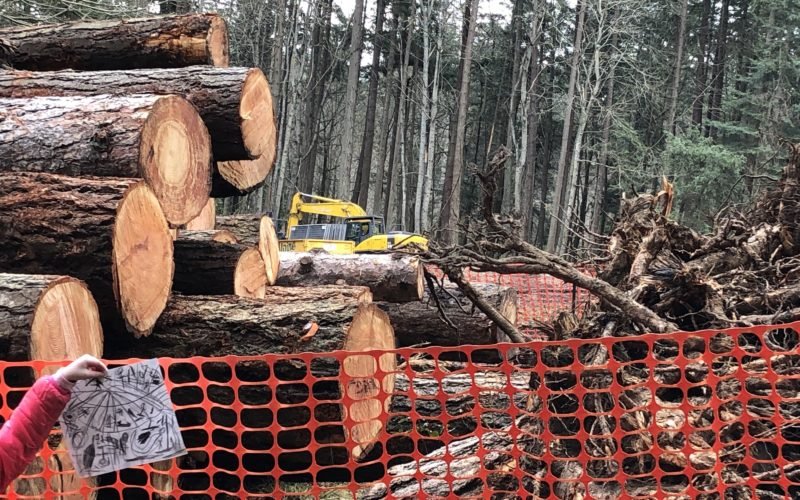What happens when pedagogies and root problems collide?
Shared by SHERRI-LYNN YAZBECK, ILDIKÓ DANIS, and NARDA NELSON
What happens when pedagogies and root problems collide? We took them for granted, not realizing our connections until now. A section of urban forest stands vacant, cleared for sewage attenuation tanks, with 11 more trees removed along the street for infrastructure upgrades and bike lane expansion. Progress. This is climate change in action and, so it seems, anything goes. But walking past those trees, touching their bark for years has touched us too and it is through this sense of loss that new and uncomfortable forms of ‘relational awakeness’ emerge (van Dooren & Rose, 2016). Sadness, outrage, shock and fascination ripple through the centre as trees “older than my Grandma” quickly come down. We are learning to think and respond with trees as teachers and loss as a guide, and it is in this new awakening we start to ask ourselves what engaging with place-based pedagogy on Lkwungen territory means. What does it mean to be touched by a tree? What would they say about our root problem?
Cover image: Sherri-Lynn Yazbeck, Haro Woods
References
van Dooren, T., & Rose, D.B. (2016). Lively ethnography: Storying animist worlds. Environmental Humanitites, 8(1). DOI 10.1215/22011919-3527731

